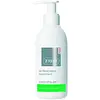What's inside
What's inside
 Key Ingredients
Key Ingredients

No key ingredients
 Benefits
Benefits

 Concerns
Concerns

 Ingredients Side-by-side
Ingredients Side-by-side

Water
Skin ConditioningGlycerin
HumectantSodium Methyl Cocoyl Taurate
CleansingCoco-Betaine
CleansingSodium Cocoyl Isethionate
CleansingSodium Chloride
MaskingNiacinamide
SmoothingGlyceryl Stearate
EmollientPEG-100 Stearate
PPG-5-Ceteth-20
EmulsifyingPEG-55 Propylene Glycol Oleate
Sodium Citrate
BufferingSodium Hyaluronate
HumectantSodium Hydroxide
Buffering2-Oleamido-1,3-Octadecanediol
Skin ConditioningKaolin
AbrasiveCoconut Acid
CleansingPropylene Glycol
HumectantCaprylyl Glycol
EmollientCitric Acid
BufferingPolyquaternium-53
Acrylates/C10-30 Alkyl Acrylate Crosspolymer
Emulsion StabilisingSodium Benzoate
MaskingSalicylic Acid
MaskingPhenoxyethanol
PreservativeChlorphenesin
AntimicrobialWater, Glycerin, Sodium Methyl Cocoyl Taurate, Coco-Betaine, Sodium Cocoyl Isethionate, Sodium Chloride, Niacinamide, Glyceryl Stearate, PEG-100 Stearate, PPG-5-Ceteth-20, PEG-55 Propylene Glycol Oleate, Sodium Citrate, Sodium Hyaluronate, Sodium Hydroxide, 2-Oleamido-1,3-Octadecanediol, Kaolin, Coconut Acid, Propylene Glycol, Caprylyl Glycol, Citric Acid, Polyquaternium-53, Acrylates/C10-30 Alkyl Acrylate Crosspolymer, Sodium Benzoate, Salicylic Acid, Phenoxyethanol, Chlorphenesin
Water
Skin ConditioningCoco-Glucoside
CleansingCocamidopropyl Betaine
CleansingSodium Cocoamphoacetate
CleansingPanthenol
Skin ConditioningLaureth-7 Citrate
CleansingPropylene Glycol
HumectantGlycyrrhiza Glabra Root Extract
BleachingSaccharomyces/Zinc Ferment
Skin ConditioningAllantoin
Skin ConditioningPEG-120 Methyl Glucose Dioleate
EmulsifyingAcrylates/C10-30 Alkyl Acrylate Crosspolymer
Emulsion StabilisingDiazolidinyl Urea
PreservativeSodium Benzoate
MaskingSodium Hydroxide
BufferingWater, Coco-Glucoside, Cocamidopropyl Betaine, Sodium Cocoamphoacetate, Panthenol, Laureth-7 Citrate, Propylene Glycol, Glycyrrhiza Glabra Root Extract, Saccharomyces/Zinc Ferment, Allantoin, PEG-120 Methyl Glucose Dioleate, Acrylates/C10-30 Alkyl Acrylate Crosspolymer, Diazolidinyl Urea, Sodium Benzoate, Sodium Hydroxide
 Reviews
Reviews

Ingredients Explained
These ingredients are found in both products.
Ingredients higher up in an ingredient list are typically present in a larger amount.
Acrylates/C10-30 Alkyl Acrylate Crosspolymer is a synthetic polymer. It is used to thicken and improve the texture of products. Due to its properties, it can prevent water and oil ingredients from separating.
Propylene Glycol is an odorless, colorless liquid. As a humectant, it helps skin retain moisture. It also aids in delivering active ingredients.
Another role of this ingredient is preventing a product from melting or freezing. Propylene glycol also adds antimicrobrial properties to a product, elongating product lifespan.
This ingredient is considered an organic alcohol and commonly added into both cosmetics and foods.
Those with sensitive skin or conditions may develop a rash when using this ingredient.
Learn more about Propylene GlycolSodium Benzoate is a preservative. It's used in both cosmetic and food products to inhibit the growth of mold and bacteria. It is typically produced synthetically.
Both the US FDA and EU Health Committee have approved the use of sodium benzoate. In the US, levels of 0.1% (of the total product) are allowed.
Sodium benzoate works as a preservative by inhibiting the growth of bacteria inside of cells. It prevents the cell from fermenting a type of sugar using an enzyme called phosphofructokinase.
It is the salt of benzoic acid. Foods containing sodium benzoate include soda, salad dressings, condiments, fruit juices, wines, and snack foods.
Studies for using ascorbic acid and sodium benzoate in cosmetics are lacking, especially in skincare routines with multiple steps.
We always recommend speaking with a professional, such as a dermatologist, if you have any concerns.
Learn more about Sodium BenzoateSodium Hydroxide is also known as lye or caustic soda. It is used to adjust the pH of products; many ingredients require a specific pH to be effective.
In small amounts, sodium hydroxide is considered safe to use. However, large amounts may cause chemical burns due to its high alkaline.
Your skin has a natural pH and acid mantle. This acid mantle helps prevent harmful bacteria from breaking through. The acid mantle also helps keep your skin hydrated.
"Alkaline" refers to a high pH level. A low pH level would be considered acidic.
Learn more about Sodium HydroxideWater. It's the most common cosmetic ingredient of all. You'll usually see it at the top of ingredient lists, meaning that it makes up the largest part of the product.
So why is it so popular? Water most often acts as a solvent - this means that it helps dissolve other ingredients into the formulation.
You'll also recognize water as that liquid we all need to stay alive. If you see this, drink a glass of water. Stay hydrated!
Learn more about Water